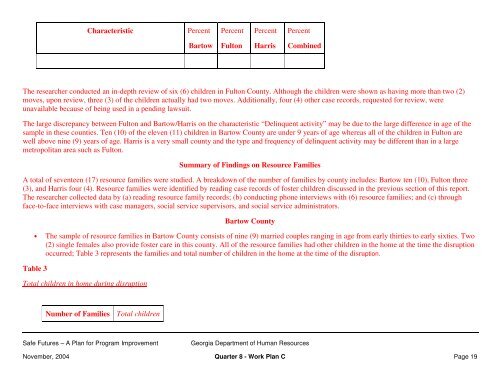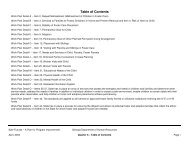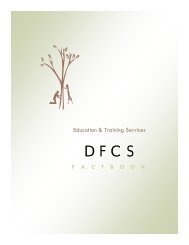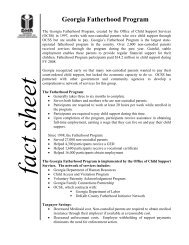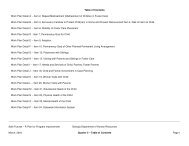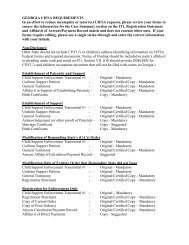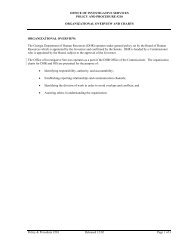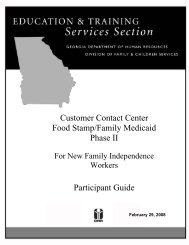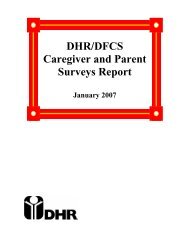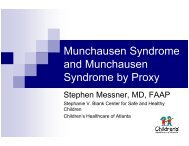an overview georgia program improvement plan - Department of ...
an overview georgia program improvement plan - Department of ...
an overview georgia program improvement plan - Department of ...
You also want an ePaper? Increase the reach of your titles
YUMPU automatically turns print PDFs into web optimized ePapers that Google loves.
Characteristic<br />
Percent<br />
Percent<br />
Percent<br />
Percent<br />
Bartow<br />
Fulton<br />
Harris<br />
Combined<br />
The researcher conducted <strong>an</strong> in-depth review <strong>of</strong> six (6) children in Fulton County. Although the children were shown as having more th<strong>an</strong> two (2)<br />
moves, upon review, three (3) <strong>of</strong> the children actually had two moves. Additionally, four (4) other case records, requested for review, were<br />
unavailable because <strong>of</strong> being used in a pending lawsuit.<br />
The large discrep<strong>an</strong>cy between Fulton <strong>an</strong>d Bartow/Harris on the characteristic “Delinquent activity” may be due to the large difference in age <strong>of</strong> the<br />
sample in these counties. Ten (10) <strong>of</strong> the eleven (11) children in Bartow County are under 9 years <strong>of</strong> age whereas all <strong>of</strong> the children in Fulton are<br />
well above nine (9) years <strong>of</strong> age. Harris is a very small county <strong>an</strong>d the type <strong>an</strong>d frequency <strong>of</strong> delinquent activity may be different th<strong>an</strong> in a large<br />
metropolit<strong>an</strong> area such as Fulton.<br />
Summary <strong>of</strong> Findings on Resource Families<br />
A total <strong>of</strong> seventeen (17) resource families were studied. A breakdown <strong>of</strong> the number <strong>of</strong> families by county includes: Bartow ten (10), Fulton three<br />
(3), <strong>an</strong>d Harris four (4). Resource families were identified by reading case records <strong>of</strong> foster children discussed in the previous section <strong>of</strong> this report.<br />
The researcher collected data by (a) reading resource family records; (b) conducting phone interviews with (6) resource families; <strong>an</strong>d (c) through<br />
face-to-face interviews with case m<strong>an</strong>agers, social service supervisors, <strong>an</strong>d social service administrators.<br />
Bartow County<br />
• The sample <strong>of</strong> resource families in Bartow County consists <strong>of</strong> nine (9) married couples r<strong>an</strong>ging in age from early thirties to early sixties. Two<br />
(2) single females also provide foster care in this county. All <strong>of</strong> the resource families had other children in the home at the time the disruption<br />
occurred; Table 3 represents the families <strong>an</strong>d total number <strong>of</strong> children in the home at the time <strong>of</strong> the disruption.<br />
Table 3<br />
Total children in home during disruption<br />
Number <strong>of</strong> Families Total children<br />
Safe Futures – A Pl<strong>an</strong> for Program Improvement<br />
Georgia <strong>Department</strong> <strong>of</strong> Hum<strong>an</strong> Resources<br />
November, 2004 Quarter 8 - Work Pl<strong>an</strong> C Page 19


